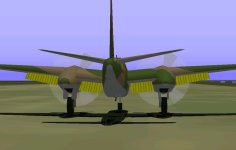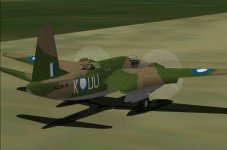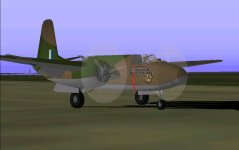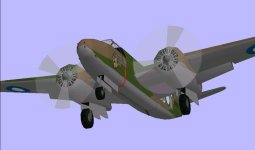aleatorylamp
Charter Member
Update: WIP model No. 3
Hello Folks,
There has been some progress in the construction of the A-20 Havoc.
AF99 Parts Count is now at 145.4%, and the model is slowly approaching completion.
Now it has flaps, 6 nose guns, the ventral gun, wheel doors and wheel wells.
Attached is the WIP-3 model and 2 screenshots, and as before, it includes source files.
The following work is still pending at the moment:
> eliminate some flap bleeds
> general textures
> removal of a few hairline cracks
> adjust dp files
> ...and anything else anyone would like to point out.
Hopefully I can finish the model for Christmas or New Year.
Meanwhile, enjoy the WIP update!
Cheers,
Aleatorylamp
Hello Folks,
There has been some progress in the construction of the A-20 Havoc.
AF99 Parts Count is now at 145.4%, and the model is slowly approaching completion.
Now it has flaps, 6 nose guns, the ventral gun, wheel doors and wheel wells.
Attached is the WIP-3 model and 2 screenshots, and as before, it includes source files.
The following work is still pending at the moment:
> eliminate some flap bleeds
> general textures
> removal of a few hairline cracks
> adjust dp files
> ...and anything else anyone would like to point out.
Hopefully I can finish the model for Christmas or New Year.
Meanwhile, enjoy the WIP update!
Cheers,
Aleatorylamp













